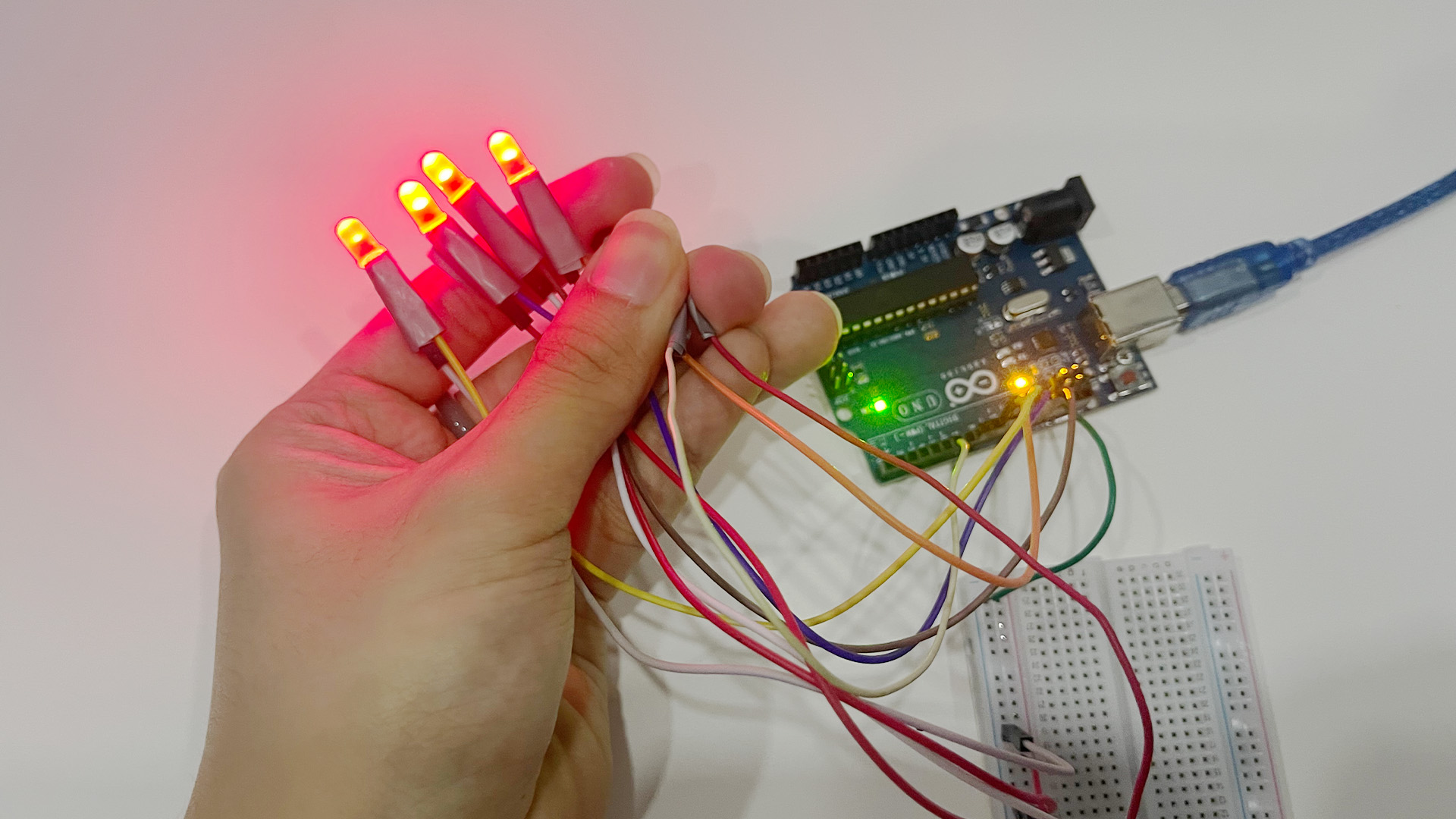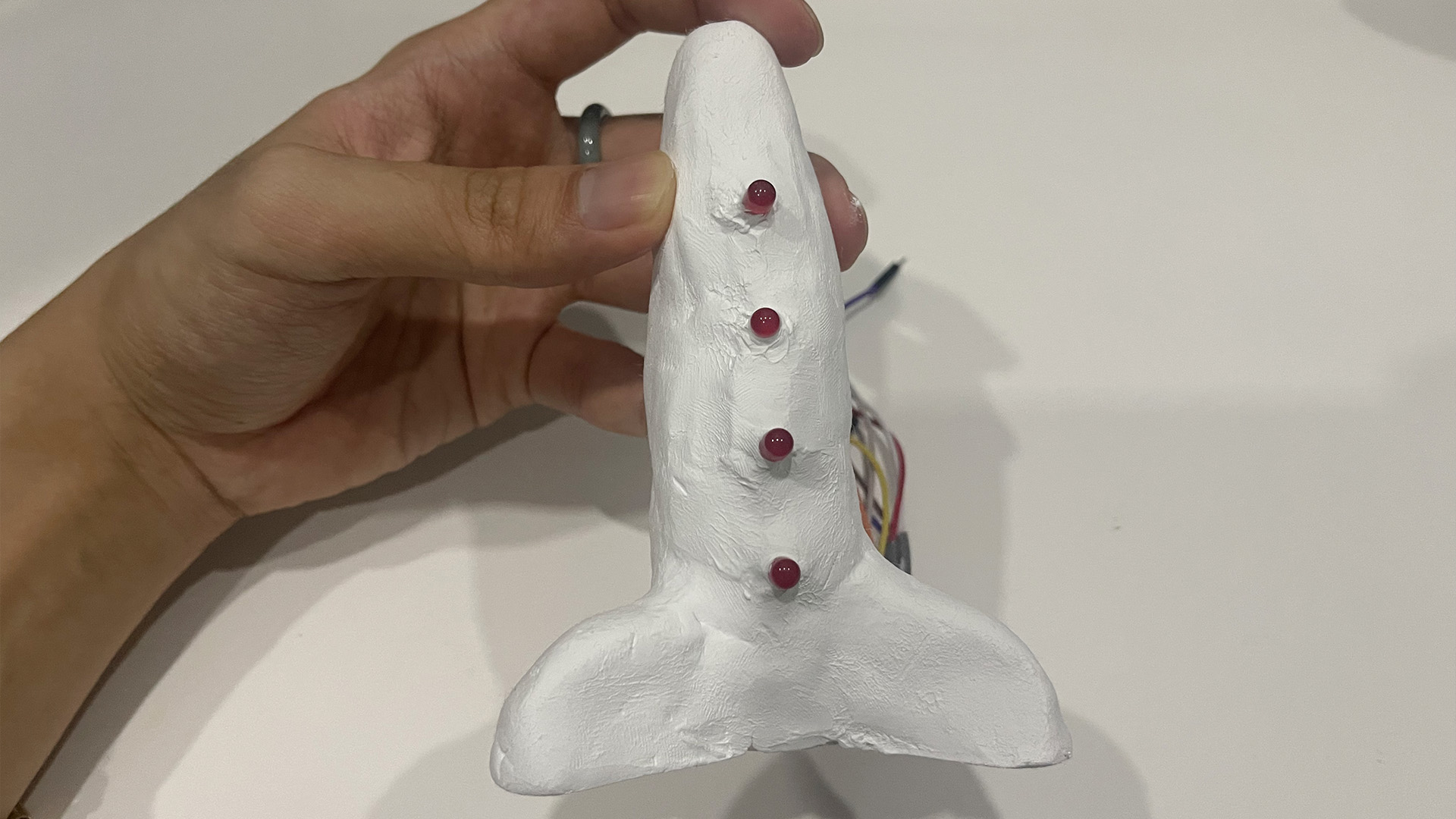
Experimentation 2
My first physical experiment began with the creation of a furry rocket ship, which I
chose as the most interesting of all the images I offered. To begin my experiment, I
knew I wanted to include some type of interaction with the rocket ship, even if it was
little. To be honest, I didn't do much planning and just plunged into the experiment.
There was no gameplan or list of items I needed to collect to build a rocket, and I did
it simply on the basis of a rough idea in my head, and I went ahead and bought items I
felt I would need or use to build my prototype.
I proceeded to acquire an arduino
board as well as cables for the arduino because there would be some type of
interactivity. I purchased LEDs because I needed some light, a button to trigger the
LED, buzzers, resistors, and a servomotor in case I needed something to move. I also
bought some heat-shrinking tubes to make a neater wire for my project. To construct the
structure of my rocket, I planned on using clay because it can be shaped into any shape
I want, followed by fur fabric to wrap around the structure to create a furry rocket.
Building
After purchasing all of my goods, the first thing I did was write a code that could be
used for the project. I began by writing a basic code that activates the LED.
Immediately after entering my code, I observed that the lights emitted by my LED were
dim. In fact, it was barely visible. I went over my code several times and looked for
explanations why this happened using web resources, but I couldn't figure out why my LED
was dim.
After a while, I realised I had purchased the incorrect LED, an infrared
LED, which required a greater input voltage than an arduino could deliver. To overcome
the problem, I understood I might need to purchase a transistor that can be used to
amplify voltages. This indicates that my experiment had come to a halt, and I couldn't
continue until I obtained a transistor. I managed to get my hands on the transistor over
the next few days, and I also decided to acquire normal LEDs in case I couldn't figure
out the suitable wiring system for my transistor and infrared LED. After receiving my
transistor, I looked online for assistance with the wiring of my circuit. After several
attempts, I was unable to get my infrared led function, so I decided to ditch it and use
a conventional LED instead to save time.
My code worked immediately after
changing the LED, and the LED lit up brilliantly as it should. This means I may go to
the second portion, where I included the button in my code. My plan was to have the led
light up one by one after pressing the button, almost like a countdown for the rocket
ship, to simulate the rocket's launch. I added functions to my code and ran my arduino
board after adding the button to my circuit. Everything went off without a hitch this
time. After completing the fundamental interactive portion of my rocket, it was time to
construct the rocket's framework.


Push Button Turning on the LED in sequence using push button
I imagined that creating the structure with clay and putting wires in between the clays
would be a breeze. However, before I can start building the structure, I need to prepare
my circuits and wiring for the clay. As I was building my circuit on a breadboard, I had
to rejoin my circuit after connecting my components with wires. I was afraid that the
wires might loosen up while I was building it inbetween my clay, so I wrapped the wires
with electrical tape as well as my heat shrinking tubes to make something neater so that
I could wrap the wires with clay more easily. I plugged everything in again after the
rewiring to test it one last time before putting together my design because if there
were any loose wires and the connection was lost, I wouldn't be able to fix it once the
clay dried.
When everything was working properly, I began constructing my
construction with the clay I purchased. Despite the fact that the structure's
construction was quite basic, I experienced a few challenges. Because the clay was
moist, it was rather slippery, and it took me quite some time to build the structure
with wires in between them. It was also difficult to achieve a symmetrical shape because
I was unable to roll the clay due to the LEDs sticking out of it. I did my best and
figured that the clay texture wouldn't matter much because it would be covered with
cloth anyway.
I let my work dry completely after creating the shape of my rocket
before moving on to the second part. When the clay dried, I double-checked my circuit to
see whether my LEDs still worked; if they didn't, I'd have to restart the entire
procedure. Unfortunately, one of the four LEDs I inserted stopped functioning for
unknown reasons, but thankfully, it was the last LED. This means I could cover it with
fur and no one would notice that there is a broken led inside. I began wrapping the fur
fabric around my rocket structure and glueing it in place with a hot glueing
gun.framework.



Wrapping my rocket in fabric made it seem silly, which wasn't what I intended for. I was
considering methods to improve the final result of my rocket. After some thought, I
decided that juxtaposing materials could result in something visually striking. I
decided to acquire a few supplies for my rocket, such as bolts and nuts, washers, and L
brackets. As we don't normally associate metals or hardware with fur, I thought this
would be an interesting pairing. I took the hardware I purchased and fastened it on the
rocket's wings to make angles that lend an edge to something that appears soft. Using
the extra infrared leds that I originally purchased incorrectly, I glued them on the
nuts and put them to the brackets, which I thought provided a robot-like aspect.
Overall, I'm pleased with the product, despite the fact that it was not
identical to the
reference I was attempting to duplicate. What I found interesting was my own personal
touch to a fuzzy rocket, which I believe also helped me elevate the appearance of my
experiment. This experiment, I thought, was an entry point into my topic, which exhibits
a prototype that gives an experience through various stimuli. The fur entices visitors
to touch it, while the buttons and leds add an interactive element. Despite the fact
that there are many ways I might improve on this experiment, I thought it was a decent
starting point for my first physical experiment. The main takeaway from this experiment
was to always have a plan before implementing. Sketching it out would undoubtedly aid in
the visualisation and ideation of the experiment, and is something I aim to take on in
the future.
Research Proposal Outline
I'm currently dumping information into a word document for my research paper. I
intended to include all of the information I wanted to present, as well as
references relevant to my investigation, and then organise them. I reasoned that
having all of the information in place would make rephrasing and rearranging my
document easier. I am also still reading additional literature reviews because that
is the most time demanding component of my RPO.
At this point, I'm fairly
confident where my research is going because there are so
many resources to read and quote. Due to the topic I chose, I frequently confront
the problem of not having enough resources and literature reviews online, but this
topic is one I am interested in, and there are numerous readings available to aid me
with my research. Even though my RPO is currently a work in progress, I can see it
being completed soon. What I believe can be improved is the speed with which I read.
I frequently found myself procrastinating or getting distracted halfway through a
work of literature, and I also felt like I was completing the bare minimum.
Hopefully, I'll be able to pick up the pace of my research shortly.

